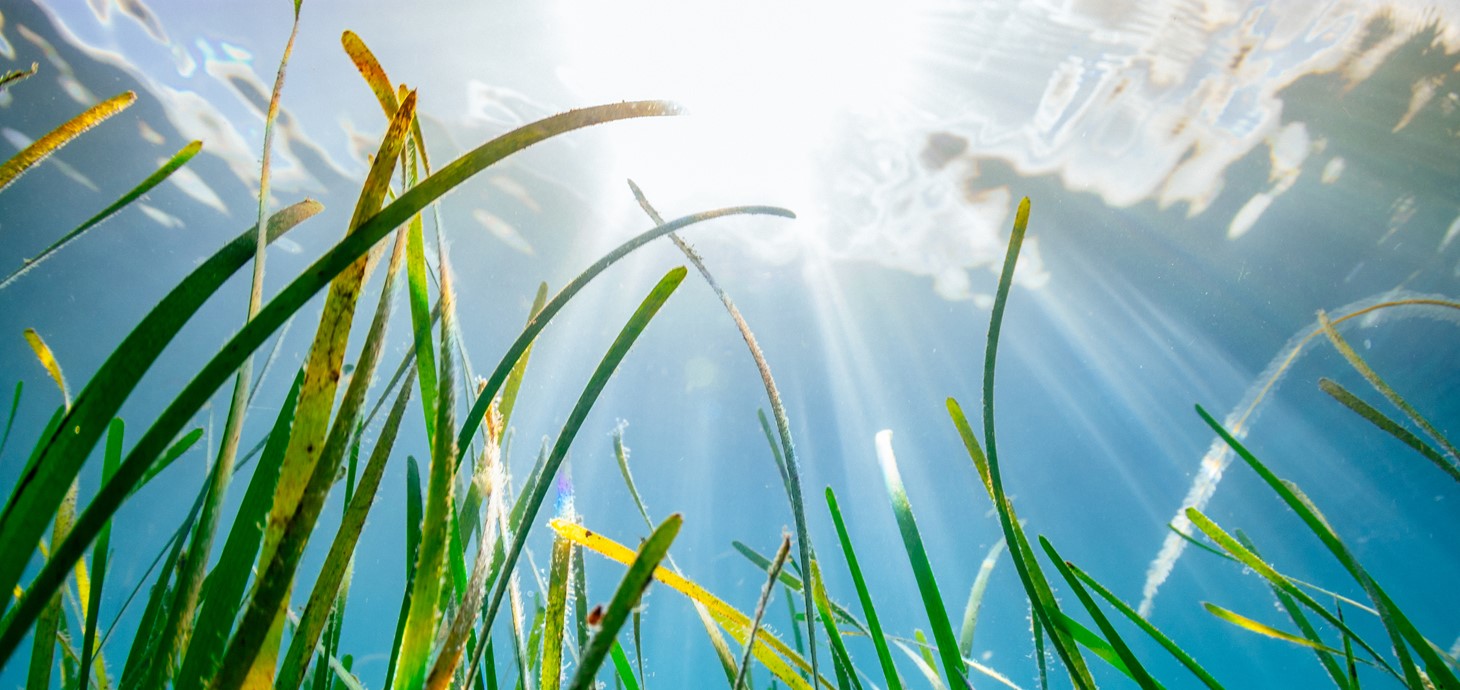These articles are now archived and will no longer be updated.

Seagrass captures carbon quicker than rainforest and supports restoration of marine life – the pilot project will restore marine habitat to help tackle the climate and nature crisis.
Sky Ocean Rescue, WWF and Swansea University have marked a major milestone in the biggest seagrass restoration project ever undertaken in the UK – planting over 750,000 seagrass seeds in Dale Bay in Pembrokeshire.
Seagrass Ocean Rescue aims to restore 20,000 m2 of the marine plant, following the disappearance of up to 92% of the UK’s seagrass in the last century. The huge decline has been caused by pollution, coastal development and damage from boat propellers and chain moorings.
Seagrass is a flowering marine plant that captures carbon from the environment up to 35 times faster than tropical rainforests, making it a key weapon in the battle against climate change. It often grows in large underwater meadows, which absorb carbon and release oxygen. Globally, it is estimated that it accounts for 10% of annual ocean carbon storage, despite occupying only 0.2% of the seafloor.
Once it matures, the seagrass meadow could support 160,000 fish and 200 million invertebrates. There is between 30 and 40 times more sea life found in seagrass, than a patch of seafloor that doesn’t have vegetation. When ecosystems are protected and restored, they can ensure biodiversity, continue to support human life, while also lessening the climate risks. Seagrass can be our hero in the fight against the climate and nature crisis. Not only does it directly absorb carbon but it creates a valuable underwater ecosystem of marine life. This ecosystem will in turn provide valuable services from providing food to helping regulate climate.
The planting, which follows the collection of seeds from existing meadows around the British Isles last summer, will continue later this year - with over a million seeds due to be planted in total in 2020.
Alec Taylor, head of Marine Policy for WWF, said: “Super seagrass brings incredible benefits for people, climate and nature, but it has all but disappeared from UK waters. If we can show that it is possible to bring it back, we will give the Government a blueprint for restoration that they cannot ignore.
“Our ocean has the potential to be a hero in the fight against climate change, but it cannot play this role without urgent, co-ordinated action. Starting by restoring seagrass, 2020 needs to be the year that the Government sets out a world-leading ocean recovery programme, to bring life back to our seas and help the country meet its net zero and nature commitments.”
The process of restoring seagrass started last summer, with a team of volunteer snorkellers and divers collecting the seeds from existing meadows around the country. The seeds were then cultivated at Swansea University. Around 2,000 volunteers, aged 3-90 years old, including many school children who live in west Wales, helped by preparing small sand-filled hessian bags. Each of these bags is tied at metre intervals to a length of rope, to help secure them to the seafloor. Just before planting each bag had one scoop of seeds added to it. In total, 15km of seed bag rope was carefully dropped into Dale Bay, from a team on board a small boat. Over time, all of the natural materials used in the planting process will safely disintegrate, leaving the seagrass seedlings to take root and grow.
Dr Richard Unsworth, lead biologist on the project at Swansea University and director of the conservation charity Project Seagrass, said: “As we stare a climate and biodiversity emergency in the face, it’s fantastic to see the enthusiasm and hard work of so many people of all ages and walks of life supporting our project to help combat these global emergencies. To realise the larger scale benefits of seagrass restoration for helping mitigate climate change and supporting our beleaguered fisheries, we need the UK government to commit to a programme of ocean recovery as part of its net zero commitment.”
Further benefits of seagrass are that it provides a crucial habitat for many of the fish we eat, such as cod, plaice and pollock. It also helps protect our coasts from erosion, as it absorbs wave energy and cleans the ocean by absorbing polluting nutrients produced on land by humans. Seagrass removes Nitrogen at 20 times the rate of bare sediment.
The site in Dale Bay, Pembrokeshire was chosen because historically this area has lost seagrass, but has the right features for it to survive in terms of water depth and sufficient light levels. The project has involved extensive work with local stakeholders and the communities – who helped choose the exact location of planting - to ensure that it has a positive benefit for all. The project aims to establish a local Seagrass Community Group to advise on the future management of the restored seagrass.
WWF and Sky Ocean Rescue are calling on the UK Government to use 2020 as the year to develop a radical world-leading ocean recovery programme which takes a holistic approach to the varied issues our oceans are facing, backed by legal commitments and investment.
